Agony by Mark Beyer (128x128mm)
I have two copies of this book — one that I bought in 87, and one I got about a decade ago. Mile High Comics were having a blow-out graphics novel sale, and they apparently had so many copies of this book that they were selling it for $5, so I… randomly bought another copy. Why? It’s a mystery to me, too.
It just seemed wrong that they were selling it for $5?
So I was somewhat surprised that the first book New York Review Comics published was a new edition of this book, because I thought this must mean that everybody who wanted a copy had a copy, but apparently not? Perhaps it just means that there’s virtually no cross-over from comic shop crowds (who had tons of copies) to the bookstore audience (who were apparently craving a copy).
The book has French flaps , and the inner book itself is in black and white.
Oops! I just totally crashed Emacs while typing this blog post, so now I have to re-type it… and I hate that. So this is going to be even shorter than ususal!
This book is basically one panel per page, so it’s a brisk read.
The storyline follows the usual Amy + Jordan structure, where things start out bad, get worse, get a bit better, and then get a whole lot worse.
There’s a bit more whimsy in some of this than usual, though.
Some parts of this story feel very familiar — I’m pretty sure I read this bit over the past few months? So is this a collection of Amy + Jordan strips with parts edited out and new stuff added?
It’s amazing how viscerally horrifying Beyer manages to make some of this stuff.
I loved this book when I was 18, and it’s still a powerful read.
Dale Luciano writes in The Comics Journal #119, page 43:
Pantheon has also published Mark
Beyer’s Agony, a 173-page M)rk in a
5″ by 5″ format. As edited and
designed by spiegelman/Mouly, this
edition Of Agony features one large
panel per page and comes complete
with a beautiful colored dust cover.
The copy on the inside front leaf in-
vites the reader to “enjoy the ecstasy
of Agony” (ho ho) and describes Beyer
as “a Hieronymous Bosch for the
1980s.”
Beyer has perfected a primitivist
drawing style that, in its odd distor-
tions of perspective and caricatural
representations of human beings, pro-
vides a remarkably consistent frame-
work for the adventures of Beyer’s tuo
hapless child protagonists, Amy and
Jordan. A storytelling pattern estab-
lished in earlier Amy/Jordan strips
(which appeared in RAW’ and the self-
published Dead Stories) is carried to
further extremes in Agony: Amy and
Jordan are swept along from one
unhappy incident to another, in a
downwardly spiralling sequences of
misfortunes that is unending. (The
conclusion of Agony implies a con-
tinuum.) The sheer excess of bad for-
tune that befalls Amy and Jordan is
itself a source of humor. And the story
itself features the kind of ridiculous
grotesquerie that seems itself the in-
vention of children (‘tind then a ghoul
rips Amy’s head off and throws it in-
to a fish tank. where the fish swallows
her head. Trying to save her head, Jor-
dan gets suallowed by the fish and has
his legs bitten off..
Some
unknown gods have it in for these two
naifs. and our response to each new
cataclysm is a growing inclination
toward laughter, albeit a disturbed
laughter. What happens during this
story turns out so much worse than
one could possibly expect that Agony
becomes a tragicomic epic outlining
the terms of a harsh, unforgiving
reality.
Within the framework of this
childrens• nightmare, the images of
catastrophe are often potent. The most
frightening menace they face is death
by radiation poisoning: Amy’k skin
melts away, and she starts vomiting
blood. As I once noted in a review of
Beyer’s Dead Stories (which includ-
ed the first 81 pages of Agony, under
the same title). “the synthesis of com-
edy and horror here is managed with
such unblinking attention to the
degradation of Amy’s human form that
the piece becomes a fascinating study
in the meaning of the macabre itself.”
There are also chilling, despairing
refrains from the characters at dif-
ferent intervals of the story. When Jor-
dan expresses his anguish by sayipg
things like “Nothing means any-
thing!” or “Whatever you do in life,
it ultimately makes no difference,”
these are simultaneously satirical
caricatures of existential angst and—
on some different level—authentic ex-
pressions of it. The overall effect is
one of a lavish, comic grotesquerie,
in the mode of a French guignol aware
of its own macabre implications. Even
the playful sequences, like the one in
which Jordan saves Amy’s life by im-
provising an ingenious way to make
a boat fly. ends in a comic cataclysm:
Jordan makes a crash landing into the
airport waiting room. Agonv is like a
modern Greek tragedy written by kids
with an intuitively subversive sense of
humor.
Ah, right — the first half of this book is taken from Dead Stories, which Beyer self-published a few years earlier.
As I said up there — New York Review Comics has reprinted it, so there should be even more copies available now.
Beyer is able to capture late 20th century angst and anxiety – urban or otherwise – in such pitch perfect fashion that it’s a shame he hasn’t found more places to publish or an audience more accepting of his dark comedic viewpoint. Here’s hoping the re-release of Agony Beyer affords him the opportunity to get some new comics out to the public. I’d love to see his take on our current, overly plugged-in culture.
Etc:
When I read Agony, I found the most poignant panel was the one in which Amy, meeting a sea creature, kindly offers it peanuts from the palm of her hand. In almost any other panel, this would be a disaster, but for once in this comic, something doesn’t go wrong, and though she may be feeding a monster Amy has a moment of innocent, innocuous pleasure. If we just wait a moment, we’re told, this pleasure will pass, and we’ll feel something new.
This blog post is part of the Punk Comix series.
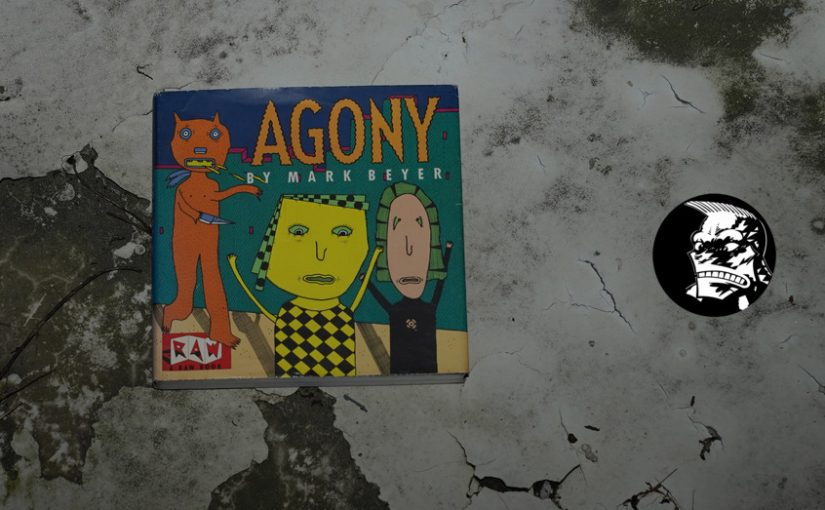
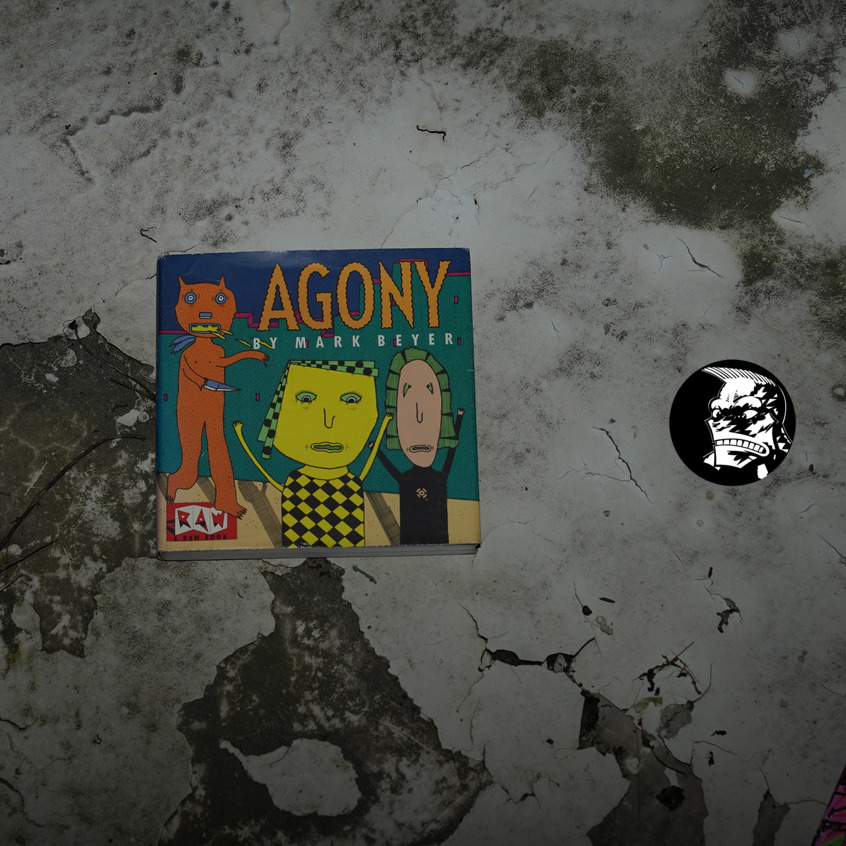
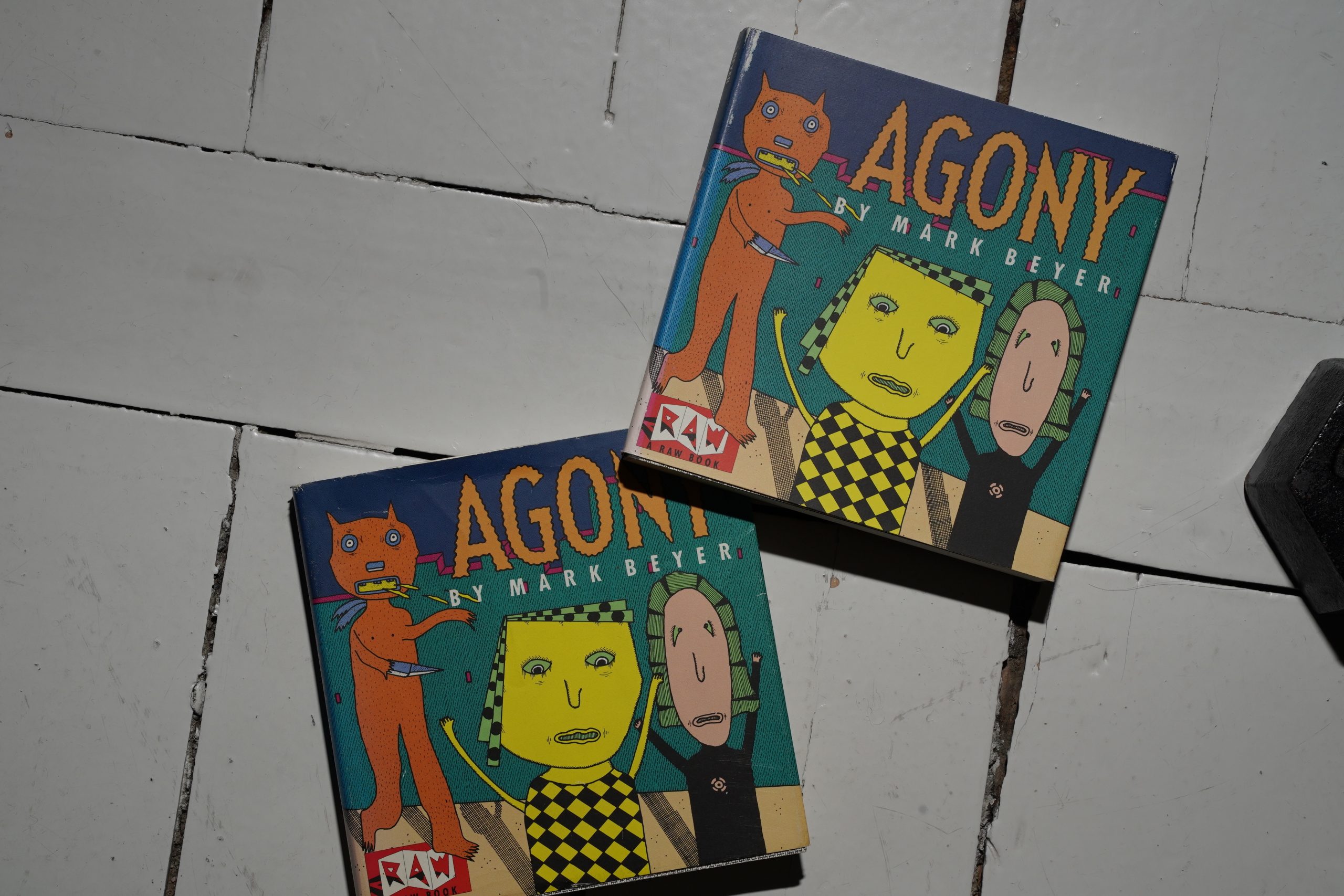
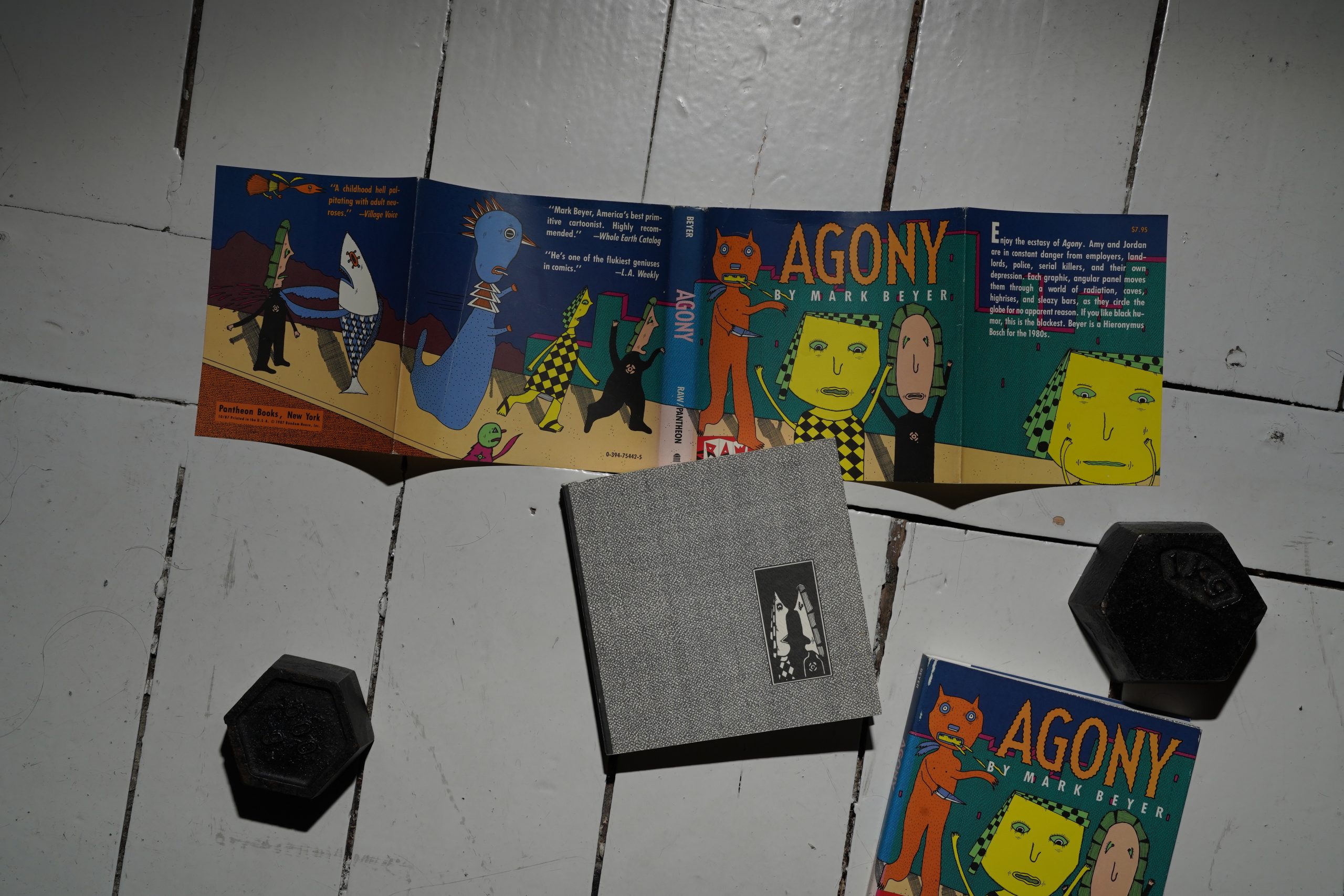
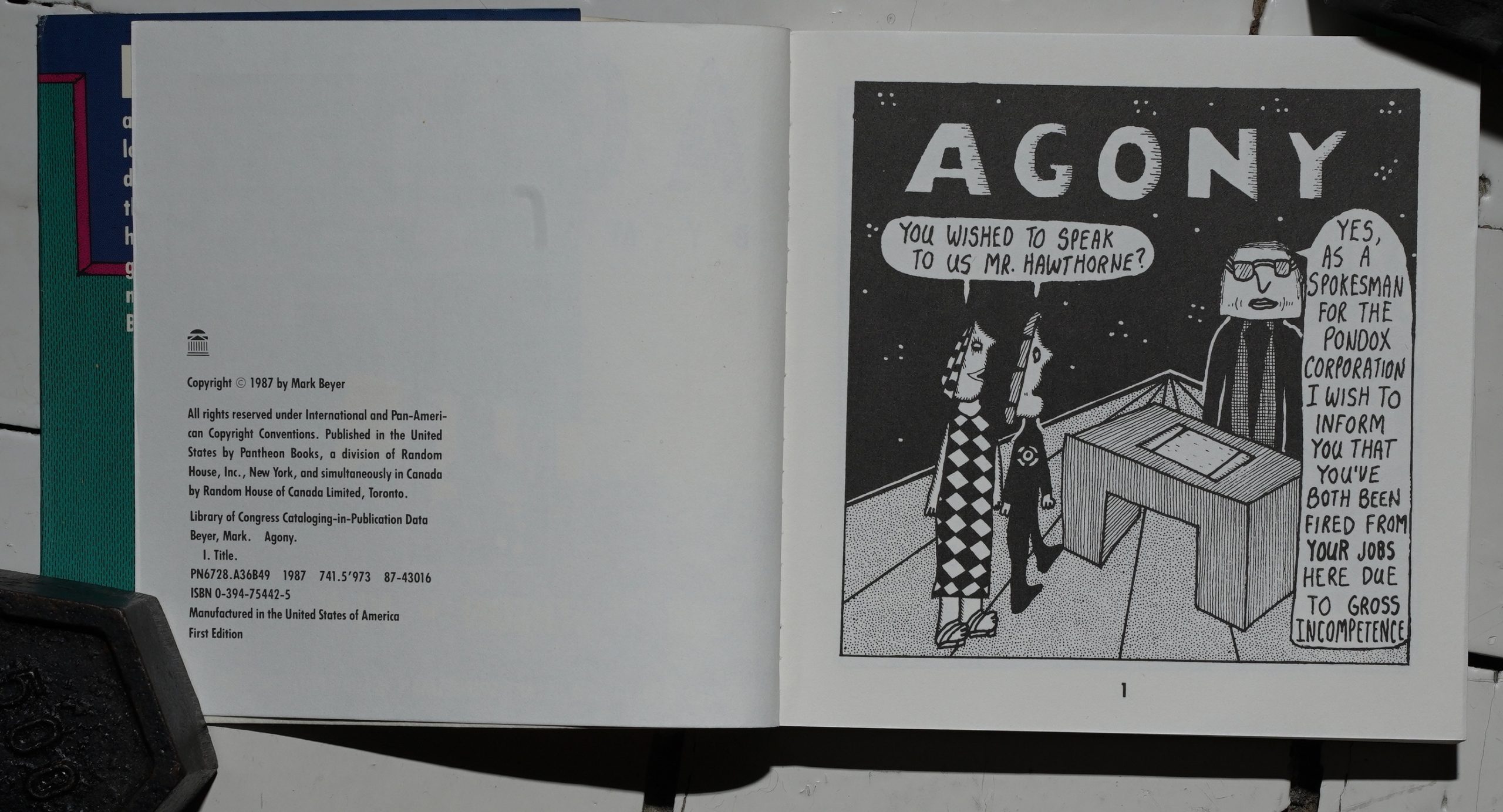
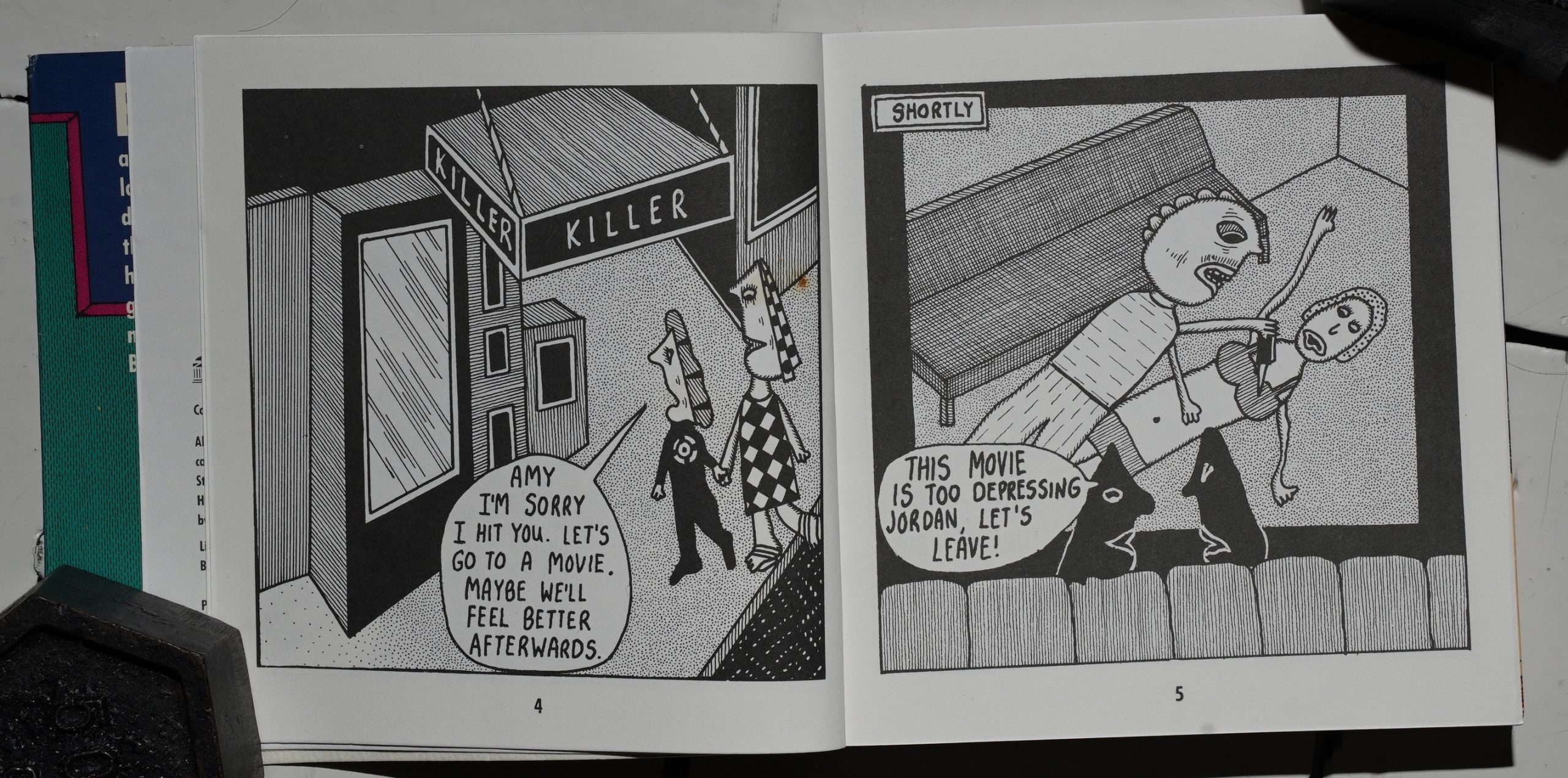
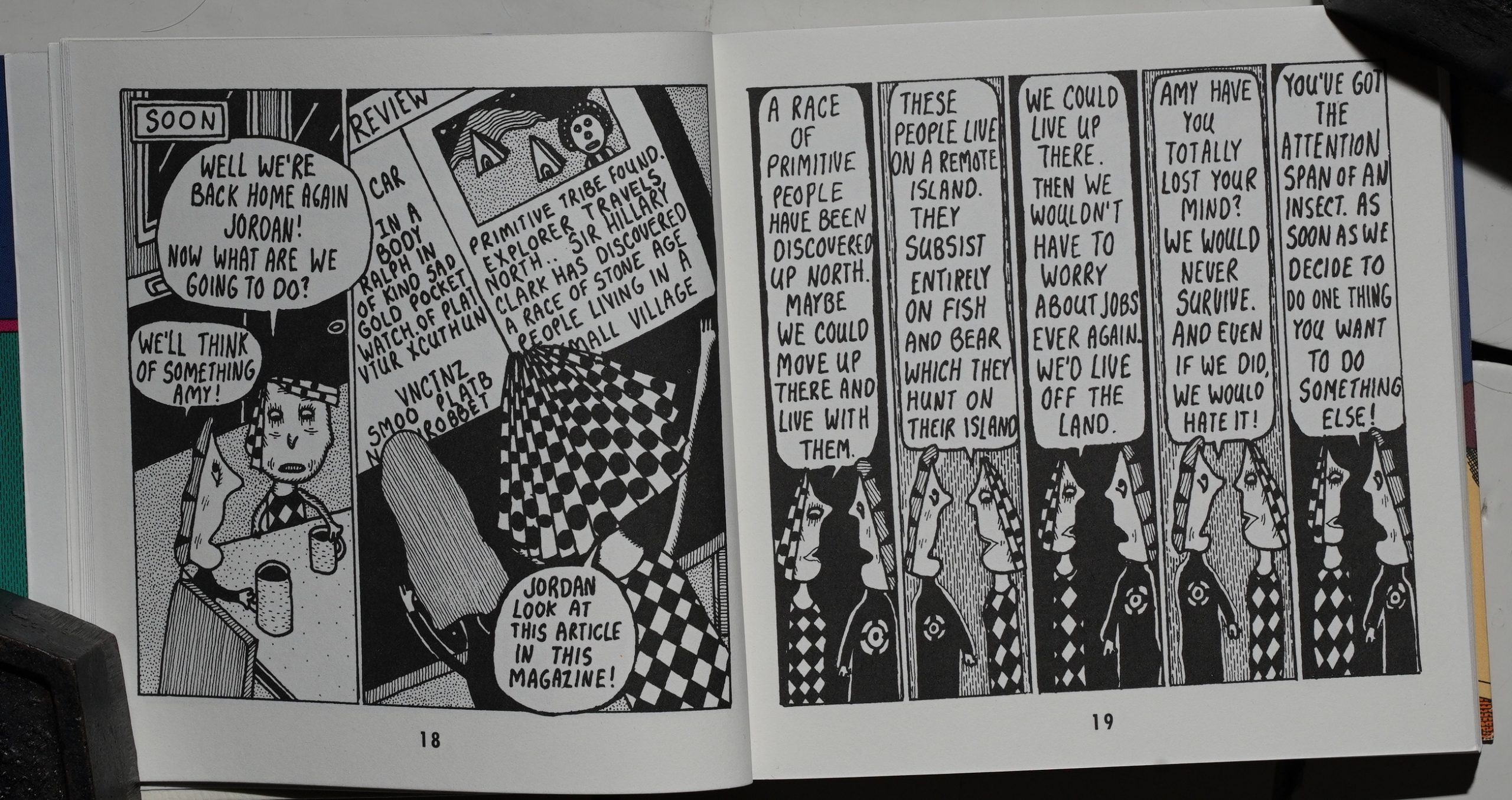
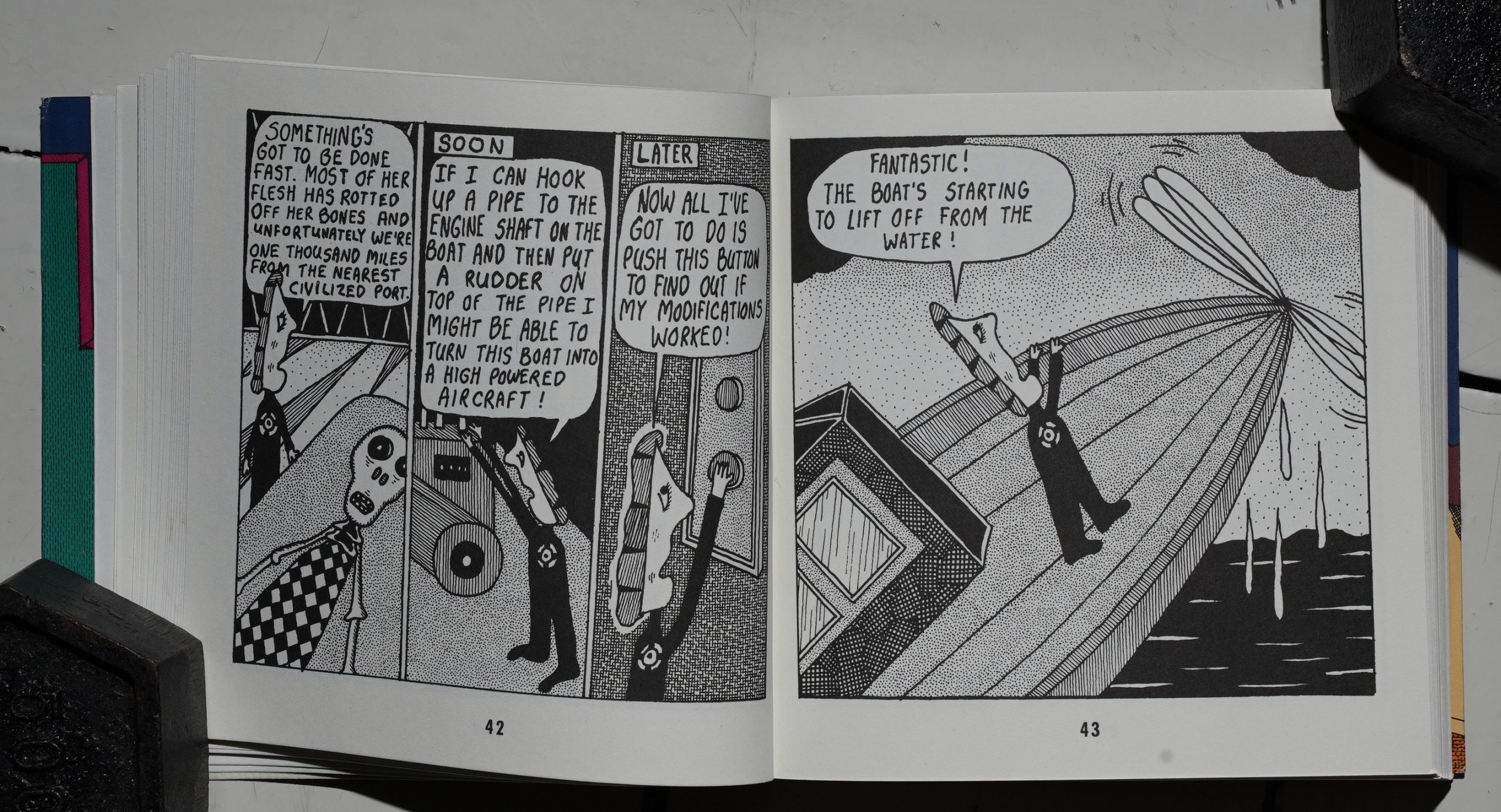
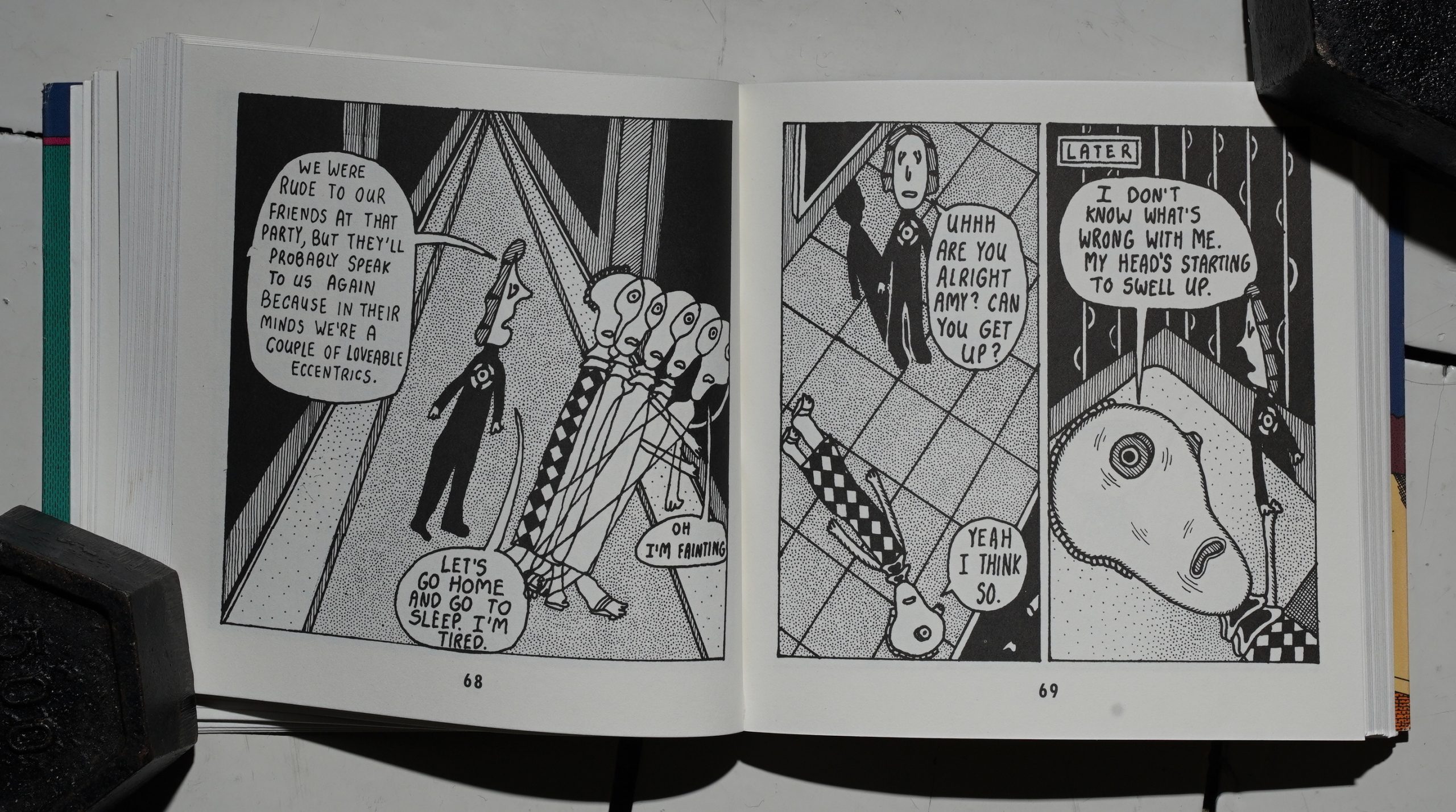
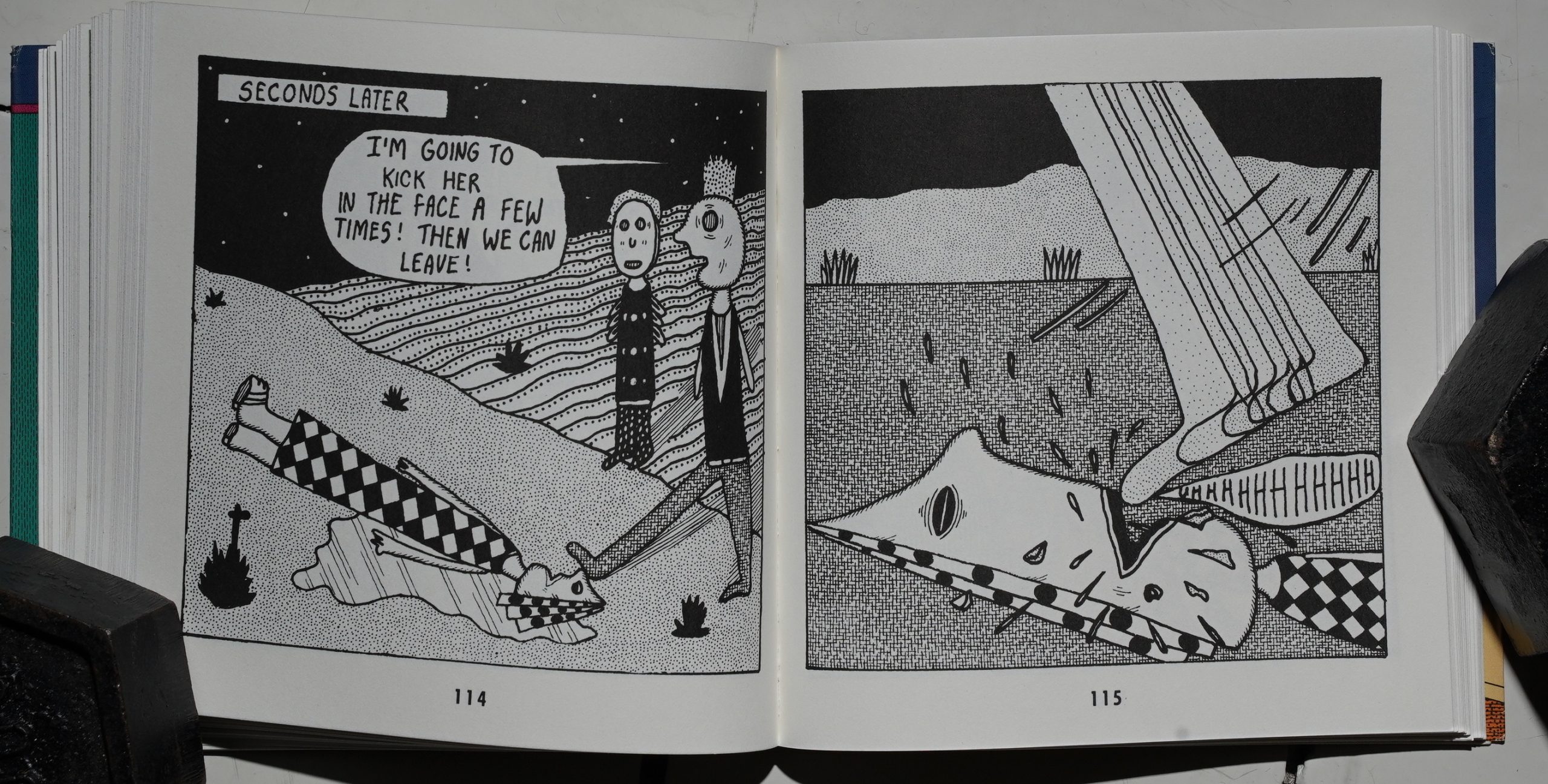
I would like to read the entire review in CJ #119 but the link only gets me the first page which contains just the beginning of your quoted section. Is it possible to get the full review? Mark Beyer is indeed a Hieronymous Bosch for the 1980s.